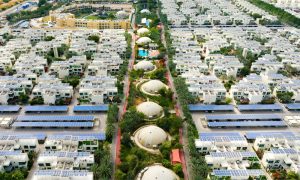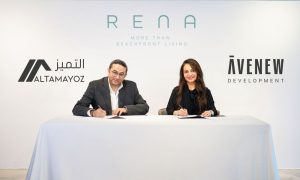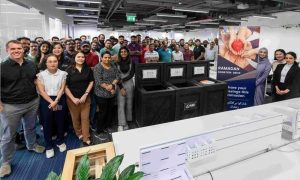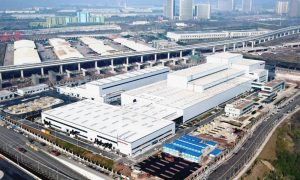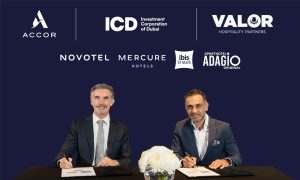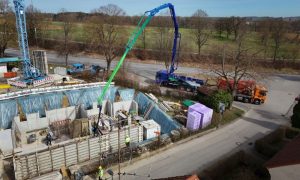WSP’s Mark Farley on raising the bar in the property and buildings space
What are the key trends in the property and buildings space and are refurbishments or new builds the answer going forward?

The expectation of structures across geographies and sectors has evolved in recent years. This shift has been triggered by everything from the pandemic to a desire to make structures more productive or even lessening their impact on the environment. As a result, firms with a proven track record of offering management and technical consultancy services on complex projects have been busier than ever.
In the GCC specifically, this is perhaps doubly true as governments look to diversify their economy, attract foreign investment, and property owners/operators seek to roll out new buildings or upgrade existing structures so they are market relevant.
Discussing how his business unit has fared in the key GCC markets of the UAE and Saudi Arabia, Mark Farley, managing director – Property & Buildings at WSP in the Middle East notes, “We’re pleased to be seeing comparable growth within our core GCC markets. This is bolstered by positive economic forecasts for the region, recent budget allocation announcements declaring healthy stimulus for the construction sector, and determined optimism as key GCC nations such as the United Arab Emirates (UAE), the Kingdom of Saudi Arabia (KSA) and Qatar embark on bringing their respective national visions to fruition.”
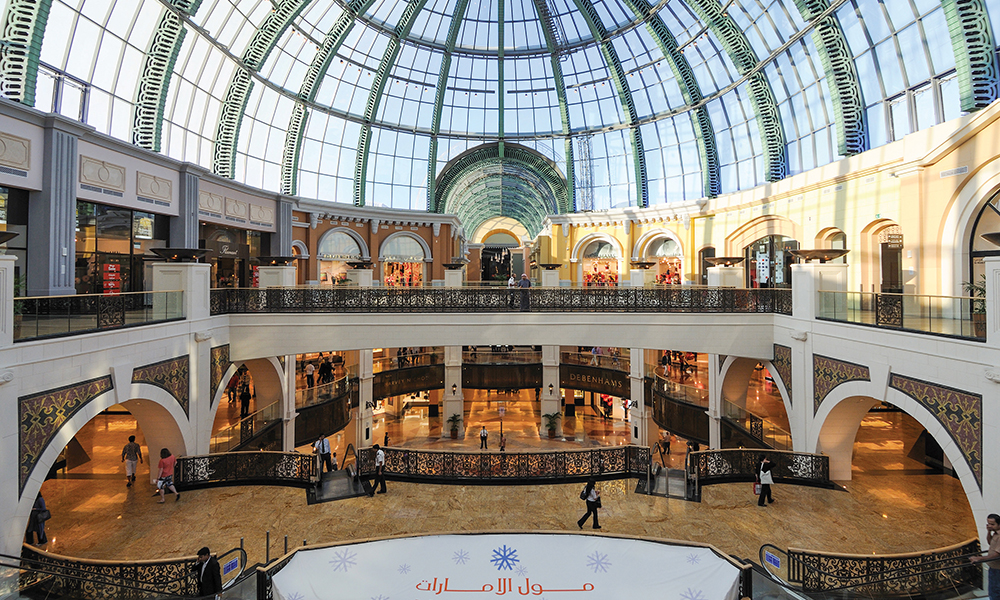
The consultancy is involved in helping flagship clients innovate and evolve existing assets for future retail experiences, such as Majid Al Futtaim’s Mall of the Emirates
Discussing key trends in the UAE, he states, “Market trends tend to be more in line with making better use of existing building stock. As a result, we’re seeing a lot of opportunity around repurposing and refurbishment of existing assets. We’re confident there will still be major projects coming online throughout the UAE, but for the time being a large proportion of older building stock – such as malls and hotels – are approaching the 15-20-year-old mark. WSP’s Building Services team, headed up by Naji Zerbe, is proud to be involved in the preservation and regeneration of flagship structures, such as Majid Al Futtaim’s Mall of the Emirates, where our multi-disciplinary teams are helping MAF re-shape existing assets to be fit for purpose retail within the evolving future retail experience.”
Shifting to the KSA market, he says, “In comparison to KSA, the UAE’s construction sector in my view is a lot more mature. In saying that, I certainly believe that the sector in KSA will ramp up significantly in the next three to five years as a lot of giga-projects projects and development portfolios take shape. We’ll be seeing a lot of these major pipeline projects hit the market and actually be completed at a much faster pace than what we have witnessed in the UAE over the last couple of decades. The sheer scale and trajectory of greenfield development is exciting to be part of, but it’s worth adding that KSA does have a significant amount of pre-existing building stock in Riyadh and Jeddah, which could be earmarked regeneration in the future.”
Pressed about some of the major differences he sees between the two markets, Farley says that the UAE already has strong infrastructure facilities and systems in place to support its population base. “It’s evident that people-centric placemaking will remain a key tenet with the likes of Dubai Urban Master Plan 2040 and Abu Dhabi Economic Vision 2030 setting the tone for long-term transformation. It’s exciting times for KSA in this area too, especially as the nation looks to empower its homegrown population base. Compared to the UAE, there’s more work to do on the provision of infrastructure in the healthcare and education spaces. Despite this, current signals are extremely positive and the sky’s the limit as different sectors are brought in to the mix to transform each area of society akin to the pillars of Saudi Vision 2030.”
He adds, “I think the quality of the construction industry’s contractors is another difference in the Kingdom when compared to the UAE. Successful stakeholder collaboration and project execution is something that we as an industry need to focus on – certainly health and safety standards.”
“The sustainability ambitions in KSA are promising, particularly within the giga projects. There’s a real built-in need to embrace climate at the core and design and implement developments that factor in things like bio-diversity, evolving climate, and circular outcomes. WSP is proud to be working on iconic packages within The Red Sea Project – Desert Rock mountain resort being a major one of these – where our teams are working to preserve and fully utilise the area’s unique environment and biodiversity.”
Discussing the UAE and Saudi markets in terms of how they might evolve in the next three to five years, Farley says both markets are known for not sitting still, as the respective authorities are intent on empowering their economies to remain globally competitive to drive future growth.
“The foundations for this growth are in place, and it’s going to be exciting to witness many key projects in KSA get across the line and start welcoming guests in the coming years. Most importantly, I’m looking forward to seeing the positive change within these countries as they reach their ambitions.”
Remaining Competitive
As structures age, new requirements or even issues may cause the structure to fall out of favor in the market. This then puts the onus on the owner/operator to either refurbish or demolish it and start from scratch. From a sustainability standpoint, refurbishments make the most sense however this isn’t always possible particularly if the cost and time for refurbishment is substantial.
Asked about his views on refurbishments Farley explains, “In a market such as the United Kingdom, if you build a development and you change its use; you don’t demolish it unless it’s not fit for purpose or if for example you are replacing a 20-storey building with an 82-storey tower. Whilst the Middle East is an entirely different market altogether, the point is that you should in principle be looking to reuse and refurbish what you have first and foremost. That’s not to say that you should never be building new builds because that’s not the answer either. My view is it’s a balancing act, and we should always be looking to reuse and refurbish buildings wherever possible. In other words, you don’t knock them down – you make them better, you extend them, you change their use and create a new experience.”

WSP is delivering multi-discipline engineering services for The Red Sea Development Company’s Desert Rock mountain resort
Discussing whether complete lifecycle costs are being more seriously considered within the regional markets or whether it is still on an limited basis, Farley points out, “In general, I think there’s a lack of looking at overall lifecycle costs and making a decision based on payback and benefits other than just simply the capital expenditure of the initial development. I think there needs to be a lot more focus on this.”
He adds, “Every client organisation and project will have different requirements and probably be operated slightly different, so I don’t think it’s a theme specific to any particular client. I think as a region the Middle East needs to place a lot more emphasis on lifecycle costing rather than just looking at what you’re spending for the initial build and then selling an asset onward.”
Asked about what technology has the potential to impact the built environment in this respect, Farley believes Digital Twins are the key. “The digital twin process has enormous potential to transform the asset lifecycle by enhancing communication, efficiency and the integrity of construction data. Standardising and automating parts of our processes will mean we have more time to spend on other complex elements of project delivery.”
He continues, “Another key trend that will continue to emerge is modular construction and design for manufacturing. We’re seeing good examples in the region, and I think that’s a massive part of the industry going forward. A major benefit of modular is the sustainability breakthroughs, as well as the affordances it allows in terms of quality, time and control. There’s also an HSE advantage to it by having less people on site, things being erected offsite, and availing so many different benefits to building within a controlled environment.”
“I also think the need for more innovation is one of the things that our industry has to be cognisant of. At WSP we want to try to look at different ways to do things, different solutions, and spend some real time on that. To remain a key player in the evolution of digital within our industry, we have to leverage innovation and break new ground to stay relevant to the emerging needs of our clients. The ultimate goal of this is design innovation and ingraining a ‘what’s next?’ approach to everything that we do.”
Key Takeaways
The UAE’s key markets of Dubai and Abu Dhabi kicked off their construction and property booms ahead of major markets in Saudi Arabia and other GCC countries. They’ve blazed a trail for others to follow and even learn from.
Asked about what learnings can be taken away from the key UAE markets, Farley remarks, “I think leveraging the best HSE practices and creating high performing teams should be front and centre, as well as delivering projects on time to avoid programme delays and ensuring all stakeholders are working towards the same end goal. Creating and influencing the right behaviors but also providing empowering cultures that ensure the safety of people and the ability for project stakeholders to deliver efficient programmes and great projects is essential. A key focus for Property & Buildings will involve our head of Integrated Design Delivery, Russell Hughes and head of Integrated Construction Delivery, Graham White driving progression in these areas.”
With regards to how buildings can be made more sustainable and efficient, Farley believes starting off on the right foot is absolutely essential. He states, “I think setting the highest standards in terms of what’s actually being developed and built is a crucial starting point and embedding a long-term vision for a project without being too driven by cost in the short term. Instead, it should be driven by value – if we value the environment, climate change and sustainability, then it’s about incorporating this as a high value item within as many aspects of a development as possible and making sure that it’s clear within the standards set and adhered to within a project.”
“There’s so much work we can do in this space, but from WSP’s viewpoint this is something that we are committed to influencing via our Future Ready mindset. We’re committed to setting the standards and raising the bar in the areas of climate, energy, and decarbonisation of the built environment. This ambition is set to grow in 2022. As we establish a new Future Ready lead to continue to drive the agenda with our clients, we need to continue the ‘What’s Next?’ mindset that is embedded in WSP.”
Sharing his thoughts on what the industry should come together around to address in the near future, Farley says, “Addressing the climate challenge and combatting carbon in the built environment is a subject we should be taking seriously and setting the highest standards in as many ways as possible. It’s clear we need to massively improve future building stock by reconsidering how to minimise carbon of buildings both in the way they are built and the way they are used and operated.”
He concludes, “At WSP Middle East, our multi-disciplinary teams are working to combine front-end strategic advisory with high-quality technical delivery in order set the standard for industry innovation in this area, which in turn will help achieve client ambitions and limit the impact of climate change whilst addressing environmental concerns.”
